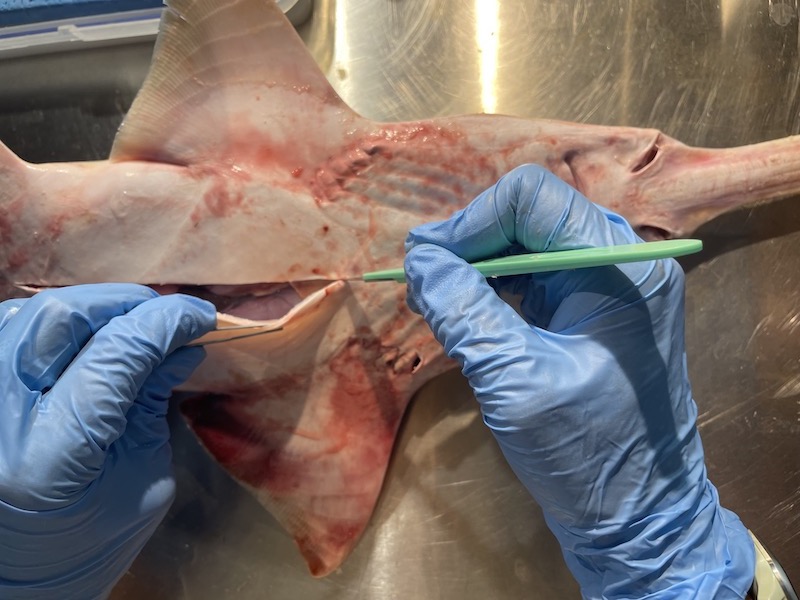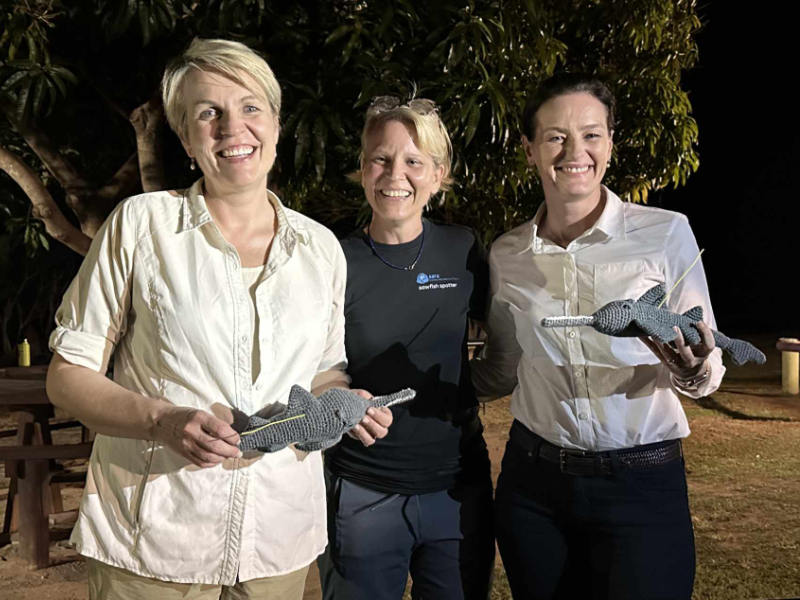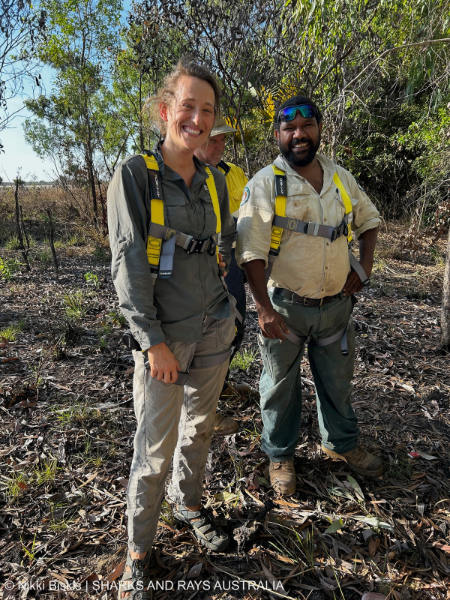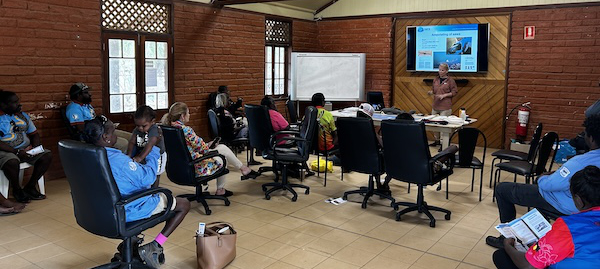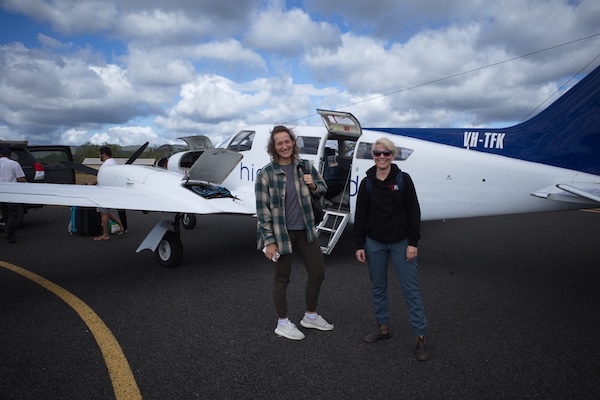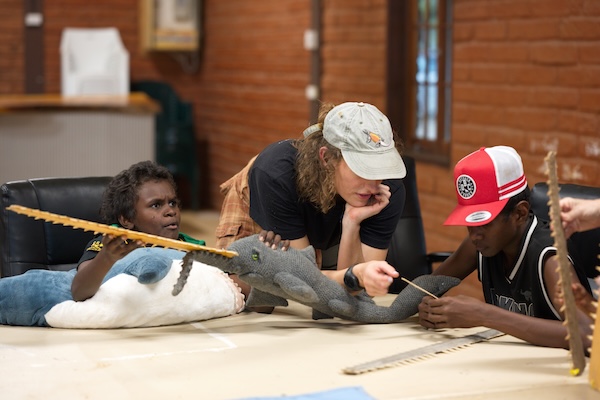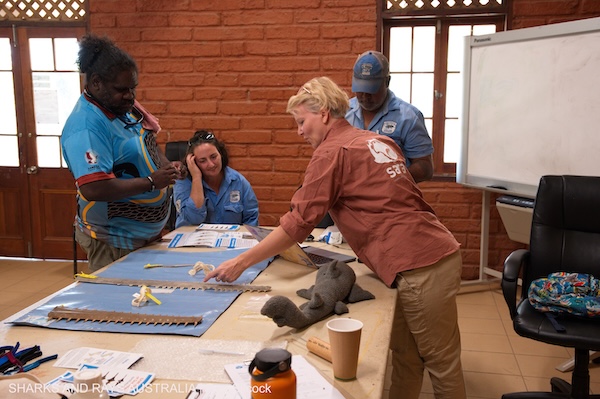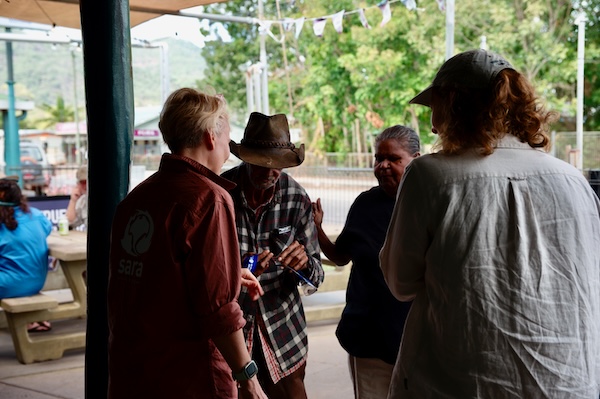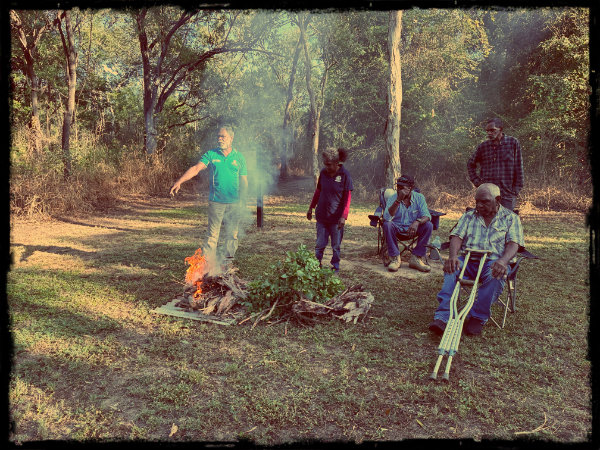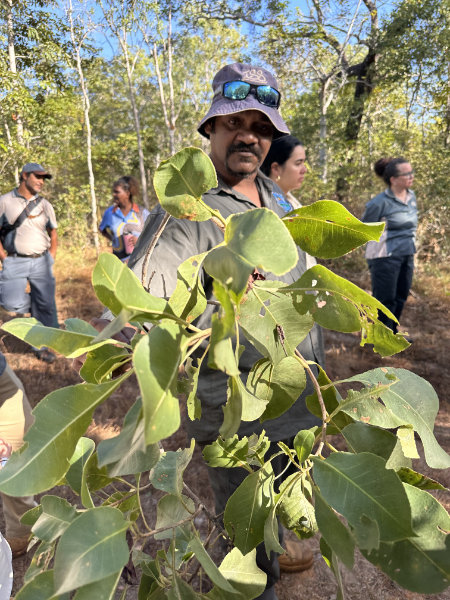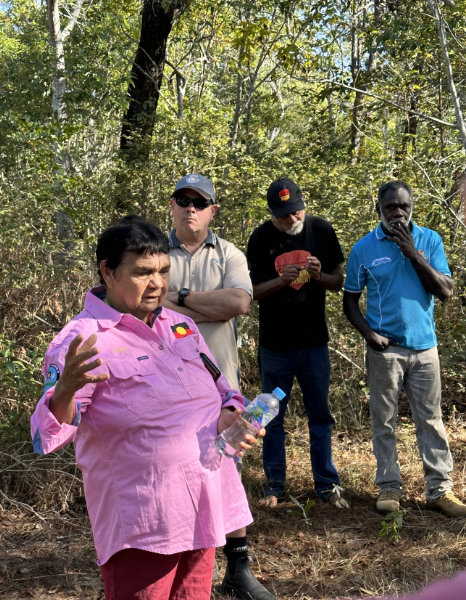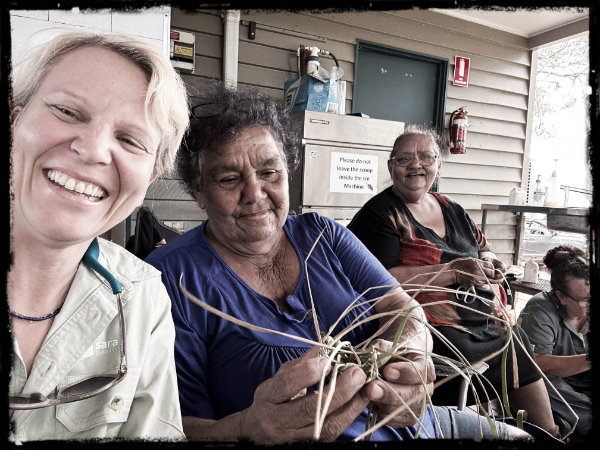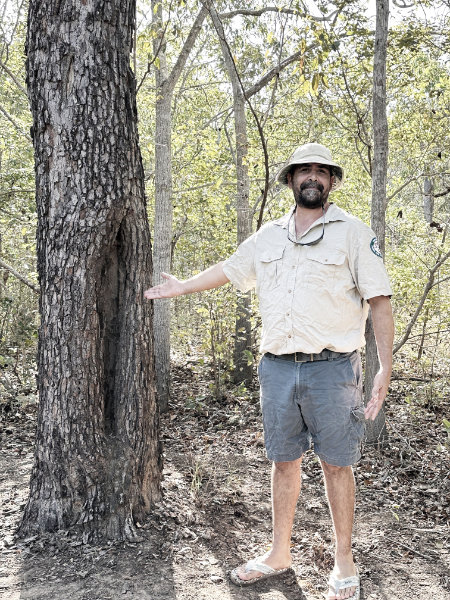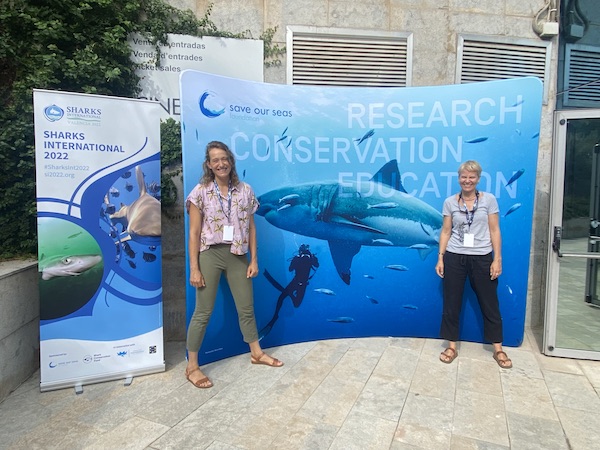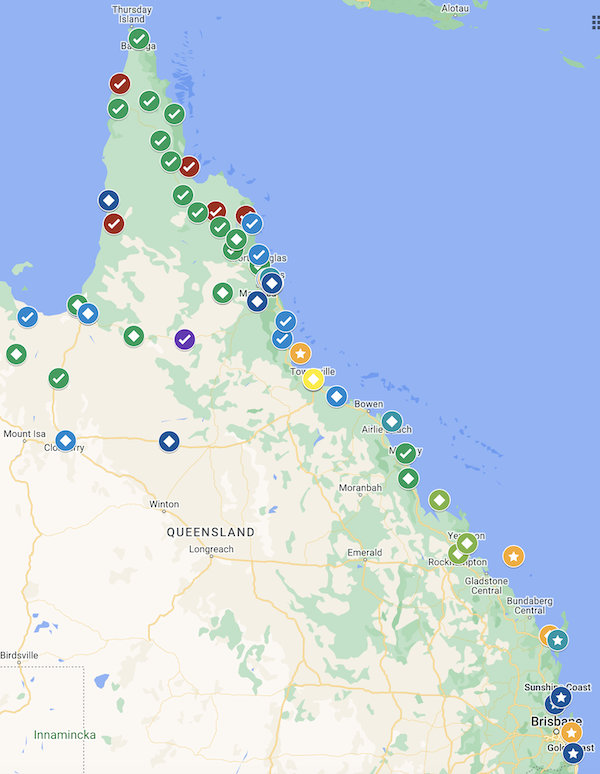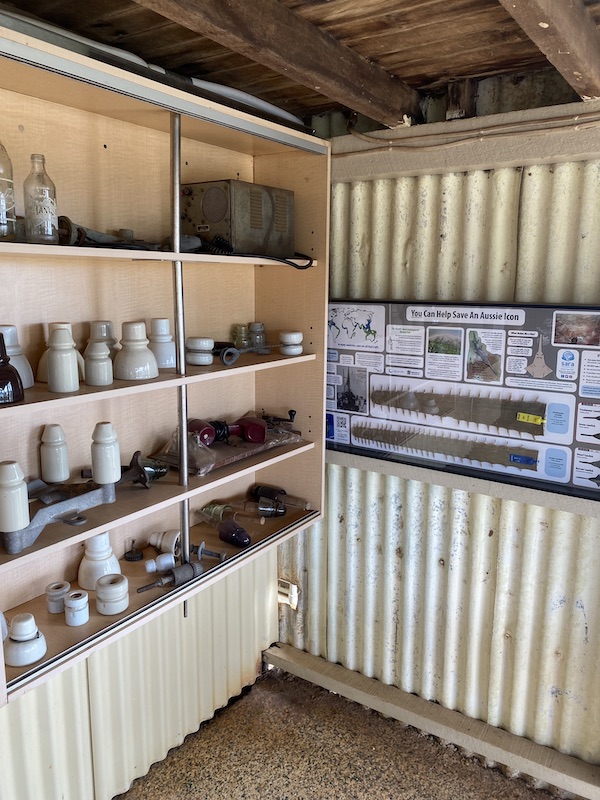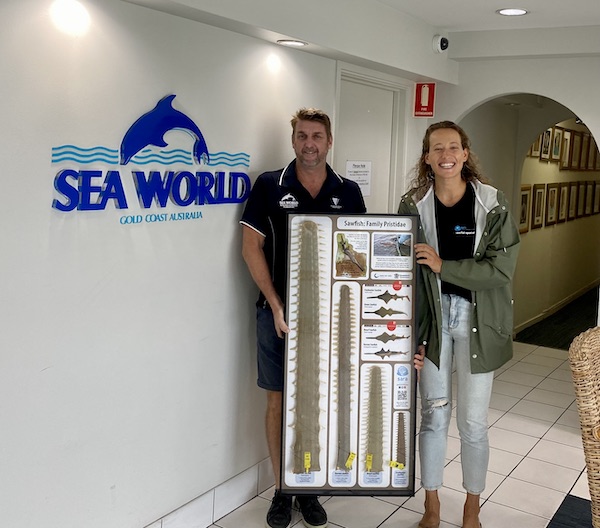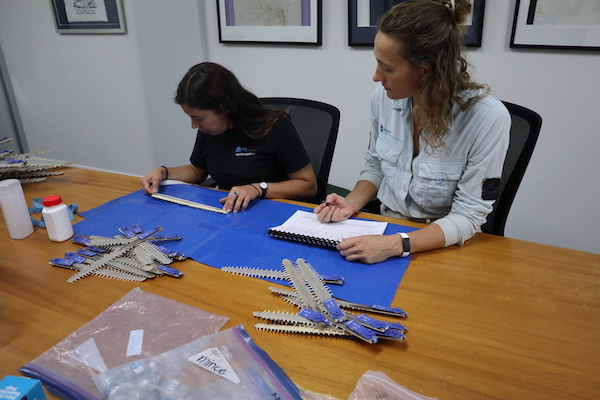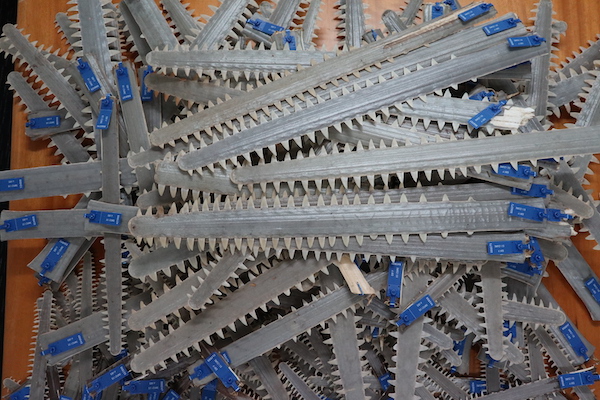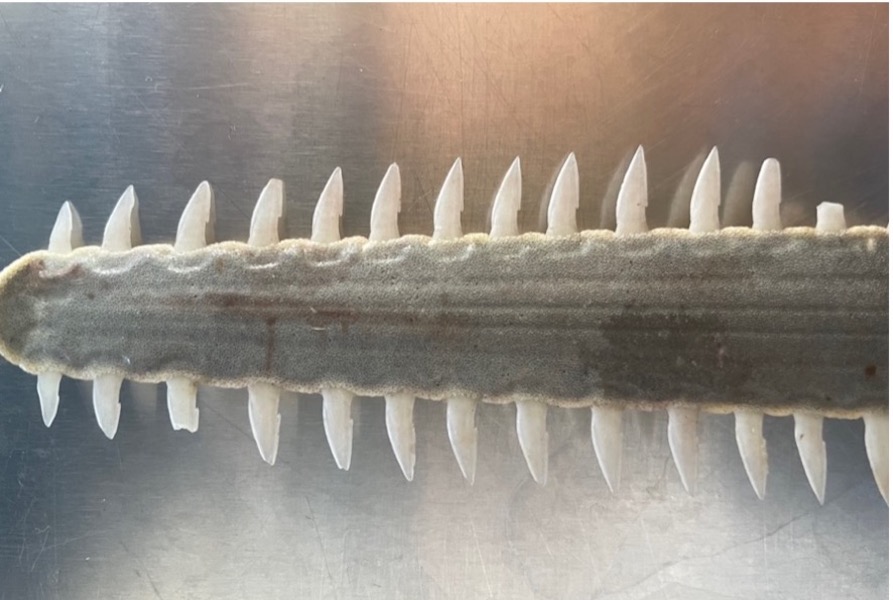
Dissection of a sawfish
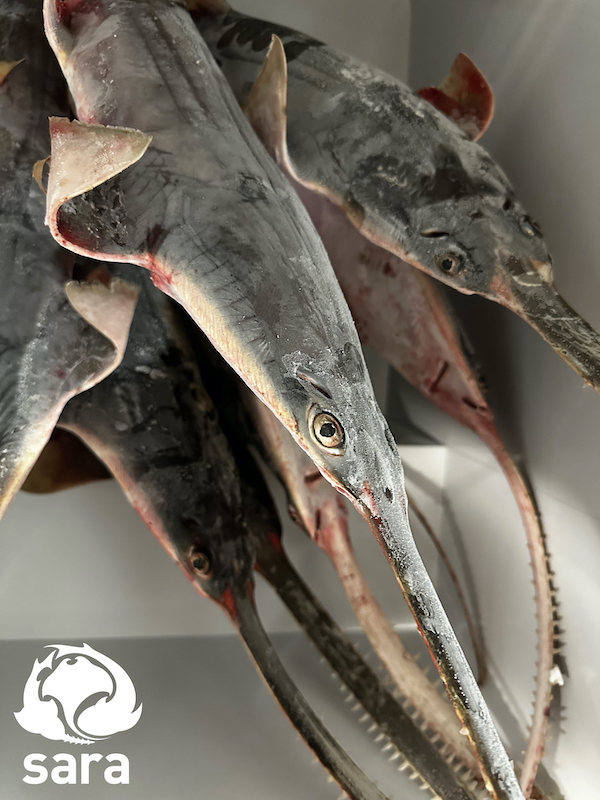
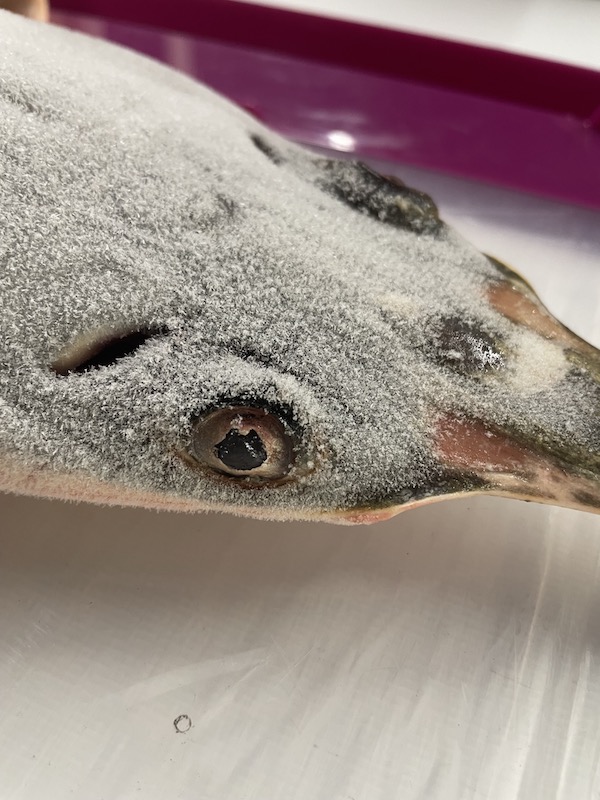
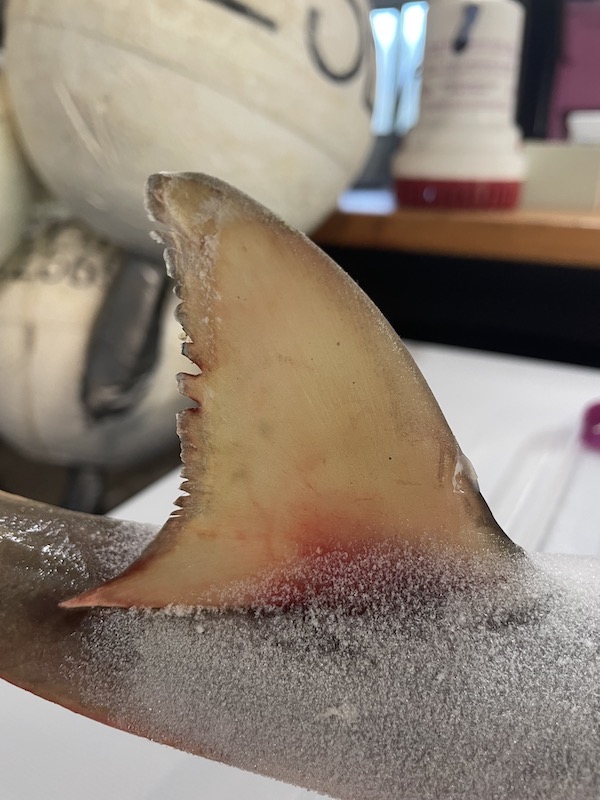
Dissecting for a deeper understanding
My SARA internship experience
Madison Baker (The University of Adelaide)
As part of my science internship with Sharks And Rays Australia (SARA), I had the unique opportunity to assist with the dissection of a juvenile narrow sawfish (Anoxypristis cuspidata).
Working with a highly threatened and elusive species, you don’t always get the chance to develop a deeper understanding of their biology. Therefore, having the opportunity to perform a dissection on a narrow sawfish was extraordinary and a once in a lifetime experience.
The dissection began with a sense of anticipation in the air. The team, composed of myself, SARA Principal Scientist Dr Barbara Wueringer and SARA Director Mark Tozer, meticulously prepared for the procedure. The juvenile narrow sawfish, one of the eight specimens graciously donated to SARA, lay before us, offering a rare glimpse into the intricacies of its anatomy.
Our primary goal of this dissection was not only to collect samples (i.e. DNA, gut content, morphometrics) for research, but use this opportunity to connect with the general public and educate them. Check out the live video on the SARA Facebook!
Exciting external findings
Before a scalpel was even lifted, we examined the sawfish’s extraordinary external features first. The rostrum, lined with sensory pores known as ampullae of Lorenzini, allows the sawfish to detect the electric fields produced by its prey. As we explored further, we documented the size and arrangement of the teeth, shedding light on the species’ feeding habits and ecological role. Estimated to be less than a year old, the rostral teeth of the specimen were noted to be still hook-shaped. The true purpose of this ‘notching’ still evades scientists today.
We then worked our way along the head and body towards the tail of the sawfish. Noted were two large eyes – that can sink into its head for protection, five-pairs of gill slits that lay underneath, two spiracles situated behind the eyes – that allow the sawfish to respire without inhaling sediment, two large flat pectoral fins and anal fins – perfect for sitting on the bottom, two dorsal fins of equal height, and a forked tail.
The sawfish was also noted to be covered in a mucous layer which made it slimy to touch. Fishermen sometimes refer to this species as the ‘slimy sawfish’. Barbara explained this helps protect them from diseases and wound infections.
Dissecting deeper
With surgical precision, we then carefully opened up the specimen to reveal the complex structures that lay beneath. We identified a large oily liver with an unusual green abscess (this was biopsied), a huge hook-shaped stomach, a spiral-valved intestine (how cool!), spleen, pancreas, gall bladder and rectal gland – an special organ for salt excretion.
We inspected the stomach to see what this juvenile narrow sawfish had been eating and to our surprise, fish eye lenses were found. But we would have to wait on the lab results to know the species and anything else it had been eating.
The most challenging part of this dissection was trying to identify the sex of this individual. As this specimen was very young, its reproductive organs were underdeveloped, so it was difficult to discern testes from ovaries. However, after some probing, we concluded that this young individual was in fact female.
My takeaways from this experience
This dissection not only contributed valuable data to ongoing SARA research but also provided an immersive educational experience for myself and the public. It emphasized the importance of conservation efforts to protect these vulnerable creatures, whose populations are highly threatened.
As I reflect on this science internship, this narrow sawfish dissection stands out as a highlight. It serves as a reminder of the endless wonders that the natural world holds and the crucial role we play as scientists in unravelling its mysteries.
Here’s to a super awesome and unique internship experience!
